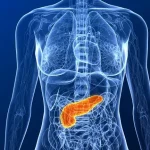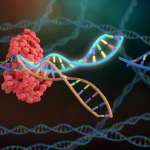By Daniel Voronel
Chemotherapy is one of the most common ways of treating cancer but is not always a foolproof method to help patients gain remission. Oftentimes, it is difficult to tell if chemotherapy will actually eliminate cancerous cells or fail to take effect. A recent paper written by Hanbing Song and Simon Bucher et al. at UCSF believes to have found a crucial answer to this issue. Through their research on hepatoblastoma, a type of liver cancer that affects children and infants, the research team led by Prof. Franklin W. Huang, Amar Nijagal,and Bruce Wang, in collaboration with the UCSF BCH Pediatric Liver Center, believes they have discovered a mechanism that is involved in determining how effective chemotherapy will be by using single cell RNA sequencing.
Hepatoblastoma is one of the most prevalent and morbid types of cancer. Its ever-evolving nature means it is difficult to provide an umbrella treatment for. After working with RNA sequencing models, the UCSF Franklin Huang Lab which Song works in, later partnered up with neighboring labs (UCSF Bruce Wang and Nijagal Lab) to aid in the research about hepatoblastoma. In collaboration with one another, they used single cell RNA sequencing to categorize hepatoblastoma.
Single cell RNA sequencing is a technology that has been used in a variety of different studies. Compared to its predecessor, bulk sequencing, single cell sequencing is much more specific. According to Song, “with bulk RNA sequencing, you are sequencing tissue without knowing its detailed composition or cell types. But with single cell sequencing, you can sequence tissue on a cellular resolution.” Song also stated that single cell sequencing allows researchers to gain a greater understanding of the mechanisms involved in specific tumor signatures. This technology allows researchers to see what specific type of hepatoblastoma the patient has, which allows for further investigation for proper treatment.
Screening for these mechanisms is of major public health importance. Prices for cancer medications can range anywhere from 70,000 to 120,000 dollars every year for people diagnosed with cancer (M. Siddiqui). This technology will have the ability to save countless people from paying for a medication that might not benefit the state of their cancer. Additionally, patients with hepatoblastoma typically have a poor prognosis. According to Song, “hepatoblastoma tumors have a high degree of heterogeneity and the five-year survival for them (hepatoblastoma patients) is among the lowest for childhood cancers, driven by cases that are chemotherapy-resistant or unresectable. This led the research team to investigate the different subtypes of hepatoblastoma, then determine how treatments can be synthesized to allow patients a better prognosis. Song predicts that the cancer treatment field is “transitioning to precision medicine” and can open up opportunities for a “customized therapy for each individual patient.” The Huang lab is currently still researching the specifics of hepatoblastoma in terms of its mechanisms in different sub groups.
The research from this study has important future implications in diagnosing and treating other types of cancer. According to Song, UCSF Huang lab is “currently doing single cell RNA sequencing on prostate cancer patients. Our interest is studying the difference in other ancestral groups.” Song mentions that the death rate for prostate cancer in African Americans is twice as high compared to other populations. The lab’s findings will be able to discover different cancer types that might be congenital to different ethnic groups, further increasing the specificity of treatment for different patients.
While Song admits that bulk RNA sequencing is cheaper and easier for labs to obtain, single cell sequencing opens up many more opportunities to understand cancer on a much more specific and precise level.
The research team led by Prof. Franklin W. Huang, Amar Nijagal, and Bruce Wang at UCSF is studying extremely important technology that has the ability to change the face of cancer treatment as we know it. Prescribing different chemotherapy treatments as umbrella medication is not a long term or responsible solution to reduce the rate of mortality from cancer. Their work allows patients to receive treatment that was specially made not only for their specific tumor signatures, but also for factors such as race, gender, and ethnicity. This change in mindset of cancer research and treatment will hopefully give patients an increased chance at remission.





